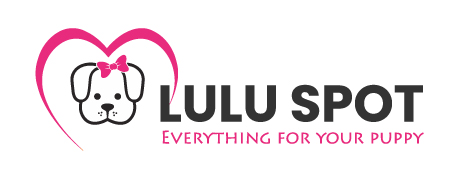Bringing a new puppy home is thrilling, but training can feel overwhelming. Positive reinforcement is the most effective method for teaching puppies good behavior. It encourages learning through rewards, praise, and consistency, helping your puppy develop confidence and trust while reducing fear or stress.
Below are 10 essential positive-reinforcement techniques, examples for each, common mistakes, and a 7-day sample training schedule to get your puppy started.

1. Reward Immediately
Technique: Provide a reward (treat, praise, or affection) within one second of the desired behavior.
Example: When your puppy sits on command, immediately say “Yes!” and give a small treat.
Common Mistake: Delayed rewards confuse the puppy and reduce the effectiveness of training.
2. Use Consistent Markers
Technique: A verbal cue (“Yes!”) or a clicker signals that your puppy performed the correct behavior.
Example: When your puppy lies down on command, click or say “Yes!” then reward.
Common Mistake: Switching markers or giving inconsistent cues slows learning.
3. Break Behaviors Into Small Steps (Shaping)
Technique: Teach complex commands gradually by rewarding incremental progress.
Example: Teaching “stay”: reward your puppy for staying 1 second, then 3 seconds, then 10 seconds.
Common Mistake: Expecting immediate perfection; skipping steps can frustrate your puppy.
4. Keep Sessions Short and Frequent
Technique: Train in 3–5 minute sessions, multiple times per day.
Example: Three short sessions, morning, afternoon, and evenin,g instead of one long 30-minute session.
Common Mistake: Long sessions can overwhelm a puppy and reduce attention span.
5. Use Praise and Affection
Technique: Not all rewards need to be treats; verbal praise and gentle petting work too.
Example: After your puppy sits or comes when called, give an enthusiastic “Good job!” and a scratch behind the ears.
Common Mistake: Relying only on treats can make the puppy dependent on food rewards.
6. Encourage Calm Behavior
Technique: Reward your puppy for being calm or settled.
Example: Give a treat when your puppy quietly lies in their bed instead of jumping on guests.
Common Mistake: Overstimulating a puppy with constant play and attention can make calm behavior less likely.
7. Shape Impulse Control
Technique: Teach “leave it” or “drop it” using a reward-based trade.
Example: If your puppy picks up a shoe, offer a small treat in exchange for the shoe.
Common Mistake: Yelling or forcing the puppy to release items creates fear or anxiety.
8. Short Recall Training
Technique: Start recall exercises in low-distraction areas.
Example: Call your puppy to come from 3–5 feet away, reward every successful return. Gradually increase distance and distractions.
Common Mistake: Practicing recall only off-leash in busy areas can lead to failures and unsafe situations.
9. Gradually Reduce Treats
Technique: Once a behavior is mastered, replace treats with praise or occasional rewards.
Example: After 10 successful “sit” commands, praise without giving a treat every time.
Common Mistake: Removing rewards too quickly can result in regression.
10. Be Patient and Consistent
Technique: Everyone in the household must use the same commands and rules.
Example: If the command for sit is “Sit!” everyone must use the same word consistently.
Common Mistake: Mixed signals from multiple family members confuse the puppy.
Common Training Mistakes to Avoid
- Punishment-based methods – Can create fear and damage trust.
- Inconsistent rewards – Confuses your puppy and slows learning.
- Skipping small steps – Puppies need gradual progress for complex behaviors.
- Overtraining – Too long or frequent sessions can stress your puppy.
- Lack of patience – Puppies are learning, not intentionally disobedient.
Sample 7-Day Positive-Reinforcement Puppy Training Schedule
| Day | Focus | Technique | Time/Session |
| 1 | Sit & Name Recognition | Immediate reward + verbal marker | 3x 5 min |
| 2 | Crate Familiarity | Reward calm behavior inside crate | 3x 5 min |
| 3 | Recall Short Distance | Reward return from 3–5 ft | 3x 5 min |
| 4 | Leave It | Trade-up treats for items | 3x 5 min |
| 5 | Stay (short) | Shape behavior 1–3 sec | 3x 5 min |
| 6 | Calmness & Settle | Reward lying quietly | 3x 5 min |
| 7 | Combine Commands | Sit, Stay, Recall in sequence | 3x 5 min |
Tip: Always end sessions on a positive note. Stop before your puppy gets tired or frustrated.
Explore LuluSpot’s Training & Behavior Collection
LuluSpot offers a comprehensive range of training tools to assist you in every step of your puppy’s development. From essential starter kits to specialized training aids, our collection is tailored to meet the needs of both new and experienced puppy owners.
Key Categories:
- Training & Behavior Tools: Includes items like clickers, training pads, and bark control collars to facilitate effective training sessions
- Puppy Starter Kits: All-in-one packages that provide the essentials for welcoming a new puppy into your home. luluspot.com
- Complete Packages: Comprehensive sets that cover bedding, grooming, and training needs for your puppy. luluspot.com
Ready to Start Training?
Visit LuluSpot’s Training & Behavior section to explore our full range of products. Whether you’re looking for a complete starter kit or specific training tools, we have everything you need to ensure your puppy’s success.
Final thoughts
Positive-reinforcement training builds trust, confidence, and good habits in your puppy. By using timely rewards, consistent markers, shaping, short sessions, and patience, you can effectively teach behaviors that last a lifetime.
Following a structured schedule ensures steady progress and makes training enjoyable for both you and your puppy.
Start early, stay consistent, and celebrate every success. Your puppy will grow into a well-behaved, happy companion.
